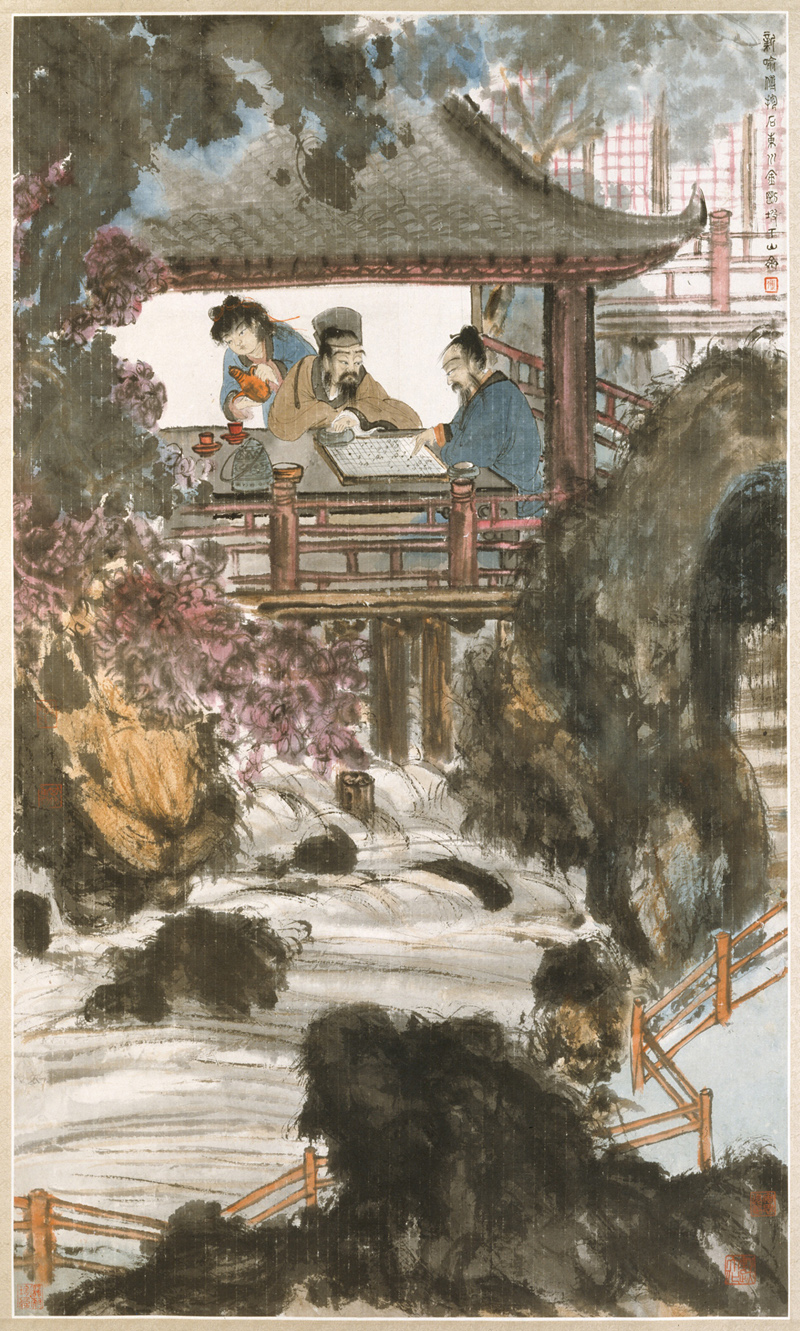Playing Weiqi at the Water Pavilion
Fu Baoshi (傅抱石, 1904-1965)
Hanging scroll, ink and color on Korean paper, 127.3 x 75.6 cm, The Metropolitan Museum of Art, New York
This large painting was done between 1940 and 1946, when Fu Baoshi lived in Sichuan. The garden pavilion buttressed by powerful rocks next to a rushing stream may refer to Fu's personal retreat as identified in his inscription: "The Mountain Studio at the foot of Mount Jin'gang in Eastern Sichuan." It may also be understood as a metaphor for China's enduring culture. The two scholars at weiqi (go, in Japanese) recall the four traditional accomplishments of the gentleman - weiqi, playing the zither, calligraphy, and painting - but they may also allude to China's history of military strategy.
The composition, framed top and bottom by forms rendered in saturated daubs of black ink, presents a shallow space packed with richly colored garden elements. Only the freestanding screen in the pavilion remains unpainted, serving as a bold accent that throws the figures into high relief, accentuating the stagelike drama. Fu's combination of Chinese and foreign painting methods is evident in his treatment of the stream, which is delineated with dry-brush contours and alternating passages of wash and uninked paper that suggest the play of sunlight across the surface-a treatment borrowed from Western watercolor techniques.
